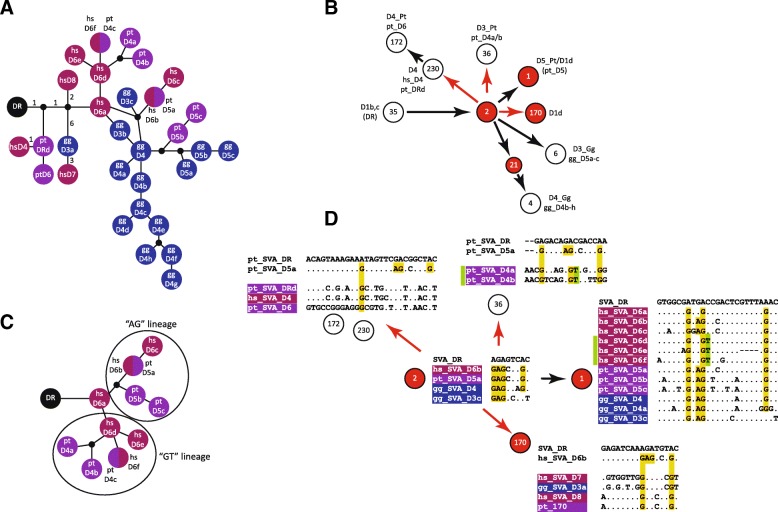Fig. 3.
Comparison of all-hominine networks. a All-hominine network based on SVA_D subfamilies identified by diagnostic substitution-based sorting. Split circles represent subfamilies with identical consensus sequences. Numbers in the proximal part of the network indicate the number of substitutions between nodes. The network is not drawn to scale. b Corresponding part of the all-hominid network as presented by Levy et al. [10]. Communities are represented by circles and their reference number as determined from the data provided in the supplement. Subfamily names are those assigned by Levy et al. (on top) and in this study (below). c Human-chimpanzee cross-species network detailing the hs_D6/pt_D4 and pt_D5 part of the network shown in (a). The different lineages are marked by ovals. The network is not drawn to scale. d Alignments of consensus sequences of the constituent subfamilies of the communities shown in (b). SVA_DR is given as reference for all alignments. Only variant positions are shown. The alignments for communities 230/172, 36 and 170 in addition contain the consensus sequence of the subfamily present in the alleged precursor community 2 (pt_SVA_D5a or hs_SVA_D6b) for comparison. Shared diagnostic substitutions present in community 2 are highlighted in yellow; hs_SVA_D6d-f and pt_SVA_D4a-b specific shared substitutions are highlighted in green. Communities whose constituent subfamilies are discussed in the main text are highlighted in red in (b) and (d). Red arrows indicate phylogenetic relationships not supported by the network shown in (a)

